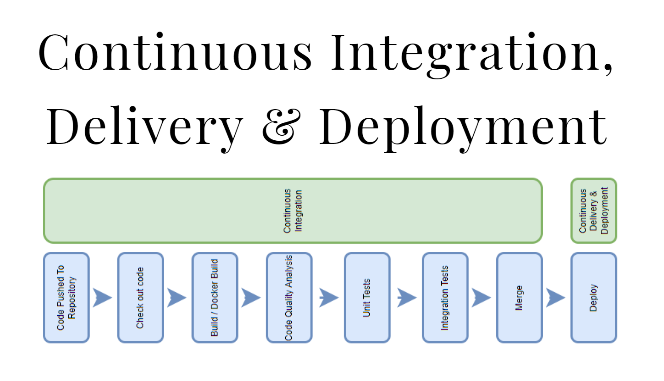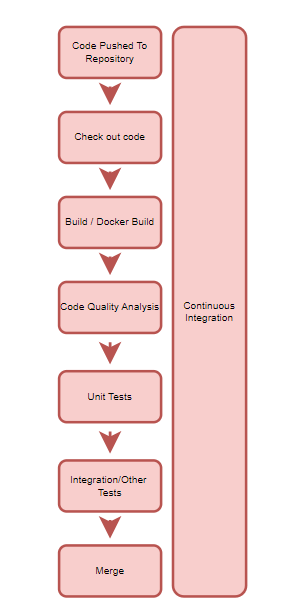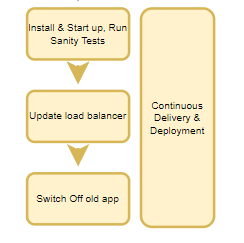Building a Robust CI/CD Pipeline: Steps for Success
Written on
Chapter 1: Understanding CI/CD Pipeline Steps
In the realm of software development, we continuously strive to enhance and update application features. The ultimate objective is to deliver high-quality, bug-free software to production as swiftly as possible. This is precisely where Continuous Integration and Continuous Deployment (CI/CD) plays a pivotal role.
If you’re seeking the secret to developing flawless software, I strongly advocate for establishing a solid CI/CD pipeline as early as possible. This framework aids in the early detection of errors, automating much of the process.
Article Objective
This article aims to delineate the steps involved in a robust CI/CD pipeline. The CI/CD pipeline encompasses an automated series of actions integral to our development cycle, utilized for building, testing, and deploying code to end users.
Benefits and Necessity of a CI/CD Pipeline
Automation of CI and CD is essential for creating a bug-free and stable enterprise-level software application. The crux is to minimize manual human intervention, enabling code deployment in the background without disrupting the end user experience. The process of integrating new features into an existing codebase and deploying them is inherently repetitive. A CI/CD pipeline facilitates the merging of new code into the existing software and expedites its deployment.

1. Continuous Integration (CI)
At its core, Continuous Integration focuses on automating build processes. Typically, a new branch is created for each feature or bug fix, triggering the CI pipeline upon code push. Ensuring rapid build success is crucial, as this process may occur multiple times throughout the day. The usual automated steps include:
- Checking out the code.
- Building (e.g., using Docker) to compile code and fetch necessary dependencies.
- Running static code analysis tools like Black or Pylint for Python, or DeepSource for C# to assess naming conventions and code quality.
- If static analysis passes, executing fast unit tests.
- Once unit tests are successful, running integration or end-to-end tests depending on the build configuration.
- Creating separate builds for slower tests that occur daily rather than with every check-in.
- Uploading test reports to reporting systems.
Over time, I have learned that the stability of our system is directly correlated to the tests executed during the build and the clarity of error messages produced. After successful builds, the code is merged into the master branch, resulting in deployable code artifacts.

This leads us to the next stage: Continuous Delivery and Deployment (CD).
2. Continuous Delivery and Deployment (CD)
At this stage, the code is prepared for deployment. A critical aspect is ensuring that the application remains accessible to users while the deployment occurs. Typical steps in the CD pipeline include:
- Taking the code artifacts and determining the target environment.
- Deploying the software without impacting user availability, facilitated by tools like Kubernetes, ECS, ELK, NGINX, and AWS Lambdas. This allows for the new applications to launch seamlessly while load balancers switch over, preventing downtime for users.
- Conducting end-to-end tests that do not alter the application or storage state, including smoke and health status tests to verify application integrity.

For those unfamiliar with Kubernetes, I highly recommend checking out this resource:
Kubernetes Tutorial For Beginners
Learn How The Container Orchestration Platform Can Be Used To Ensure Your Applications Have Zero Downtime
Additionally, enterprise architects should explore Nginx for enhanced application scaling:
Scale Python Applications Using Nginx
Optimize Python Applications to Reduce Downtime, Minimize Redundancy, and Boost Reliability
Summary
Establishing a fast and automated CI/CD pipeline is vital for efficiently building, packaging, and deploying software applications.

Continuous updates to software features are essential, with the overarching aim of delivering high-quality, bug-free applications swiftly. During the CD phase, it is crucial to execute rapid tests after each code check-in, along with comprehensive end-to-end tests that maintain application state and ensure system health throughout the CD pipeline.
This video explains the CI/CD process and offers a hands-on project for better understanding.
A step-by-step guide to utilizing GitHub Actions for your CI/CD pipeline.